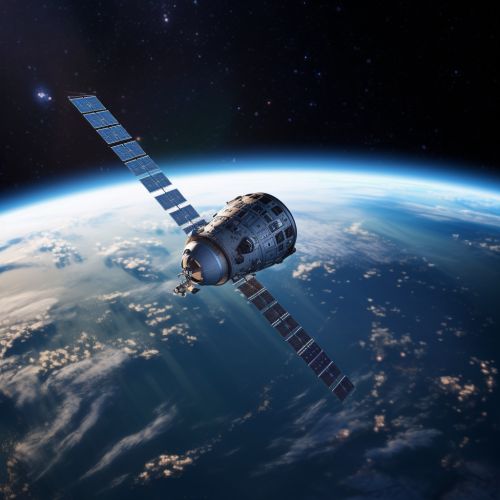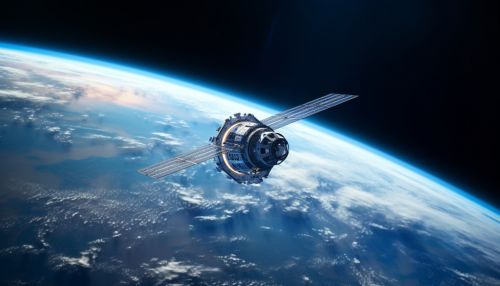Orbital Mechanics in Space Missions
Introduction
Orbital mechanics, also known as celestial mechanics, is a field of study that focuses on the motions of celestial bodies in outer space. It is a critical aspect of space missions, as it determines the path that a spacecraft will take to reach its destination. The principles of orbital mechanics are used to design the trajectory of a spacecraft, calculate the energy required for a mission, and predict the future position of a spacecraft.
History of Orbital Mechanics
The study of orbital mechanics dates back to the ancient Greeks, who made significant contributions to the understanding of celestial motions. However, the modern field of orbital mechanics was largely developed by Sir Isaac Newton in the 17th century, with his laws of motion and universal gravitation. These laws form the basis of classical mechanics, which is still used today to calculate the orbits of bodies in space.


Principles of Orbital Mechanics
Orbital mechanics is governed by several key principles, including Newton's laws of motion, the conservation of angular momentum, and the conservation of energy. These principles allow for the prediction and calculation of orbits, and are used in the design and operation of space missions.
Newton's Laws of Motion
Newton's laws of motion are fundamental to understanding the movement of bodies in space. The first law, also known as the law of inertia, states that an object at rest will stay at rest, and an object in motion will stay in motion, unless acted upon by an external force. The second law states that the force acting on an object is equal to its mass times its acceleration. The third law, often referred to as the action-reaction law, states that for every action, there is an equal and opposite reaction.
Conservation of Angular Momentum
The conservation of angular momentum is a principle that states that the total angular momentum of a system remains constant unless acted upon by an external torque. This principle is crucial in understanding the orbits of celestial bodies, as it explains why planets move in elliptical orbits around the sun, and why satellites move in circular or elliptical orbits around planets.
Conservation of Energy
The conservation of energy principle states that the total energy of an isolated system remains constant. In the context of orbital mechanics, this means that the sum of a spacecraft's kinetic energy and potential energy remains constant throughout its orbit, assuming no external forces are acting on it.
Orbital Elements
Orbital elements, or Keplerian elements, are a set of six parameters that define an orbit. These elements are used to describe the size, shape, and orientation of an orbit, and are critical in the planning and execution of space missions.
Semi-Major Axis
The semi-major axis is half the longest diameter of an ellipse, and represents the average distance from the center of the orbit to the orbiting body. It is a measure of the size of the orbit.
Eccentricity
The eccentricity of an orbit is a measure of its deviation from a perfect circle. An orbit with an eccentricity of 0 is a circle, while an orbit with an eccentricity close to 1 is highly elongated.
Inclination
The inclination of an orbit is the angle between the plane of the orbit and a reference plane, typically the plane of the equator. It is a measure of the tilt of the orbit.
Longitude of the Ascending Node
The longitude of the ascending node is the angle between a reference direction and the point where the orbiting body crosses the reference plane from south to north. It is a measure of the orientation of the orbit in space.
Argument of Periapsis
The argument of periapsis is the angle between the ascending node and the point of closest approach to the central body. It is a measure of where in its orbit the orbiting body is closest to the central body.
True Anomaly
The true anomaly is the angle between the direction of periapsis and the current position of the orbiting body. It is a measure of where the orbiting body is in its orbit at a specific time.
Orbital Maneuvers
Orbital maneuvers are changes in the velocity of a spacecraft, used to change its orbit. These maneuvers are critical in the operation of space missions, as they allow for the spacecraft to reach its destination, perform scientific observations, and return to Earth.
Hohmann Transfer Orbit
A Hohmann transfer orbit is an elliptical orbit used to transfer a spacecraft from one circular orbit to another. It is the most energy-efficient method of transferring between two orbits, and is commonly used in space missions.
Bi-Elliptic Transfer
A bi-elliptic transfer is a method of transferring a spacecraft from one orbit to another, using two intermediate elliptical orbits. While it requires more time than a Hohmann transfer, it can be more fuel-efficient in certain situations.
Gravity Assist
A gravity assist, or gravitational slingshot, is a maneuver in which a spacecraft uses the gravity of a planet or other celestial body to alter its path and speed. This maneuver can be used to save fuel, reach high speeds, or change direction.
Applications in Space Missions
Orbital mechanics plays a crucial role in the design and operation of space missions. It is used to calculate the trajectory of a spacecraft, determine the energy required for a mission, and predict the future position of a spacecraft.
Mission Design
In the design of a space mission, orbital mechanics is used to determine the most efficient path for a spacecraft to reach its destination. This involves calculating the necessary orbital maneuvers, and determining the optimal launch window.
During a space mission, orbital mechanics is used to navigate the spacecraft. This involves tracking the spacecraft's position, predicting its future position, and making any necessary course corrections.
End of Mission
At the end of a space mission, orbital mechanics is used to bring the spacecraft back to Earth, or to place it in a safe and stable orbit. This involves calculating the necessary de-orbit or disposal maneuvers.
Conclusion
Orbital mechanics is a critical aspect of space missions, providing the tools necessary to navigate the vastness of space. Its principles and applications are fundamental to the success of any mission, from the initial design phase, through the navigation and operation of the spacecraft, to the end of the mission.
